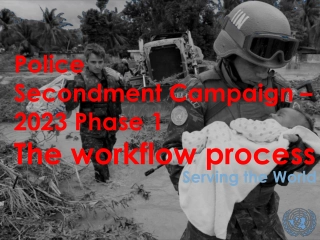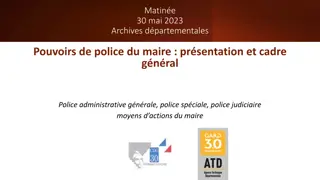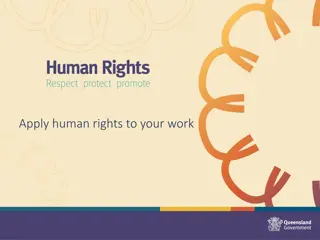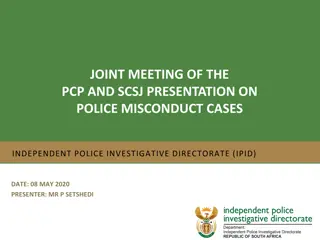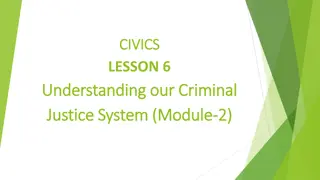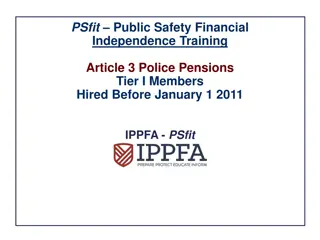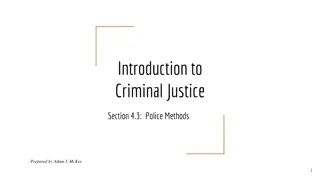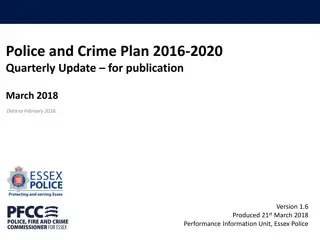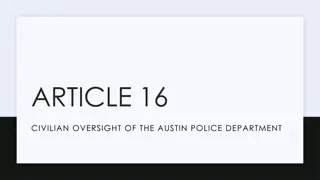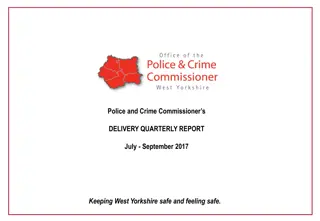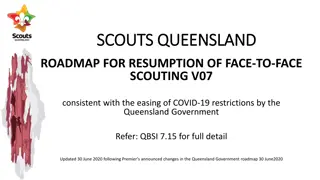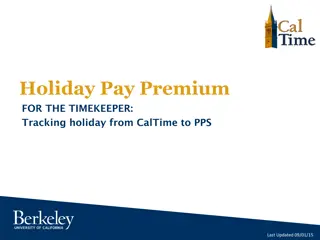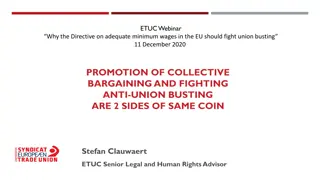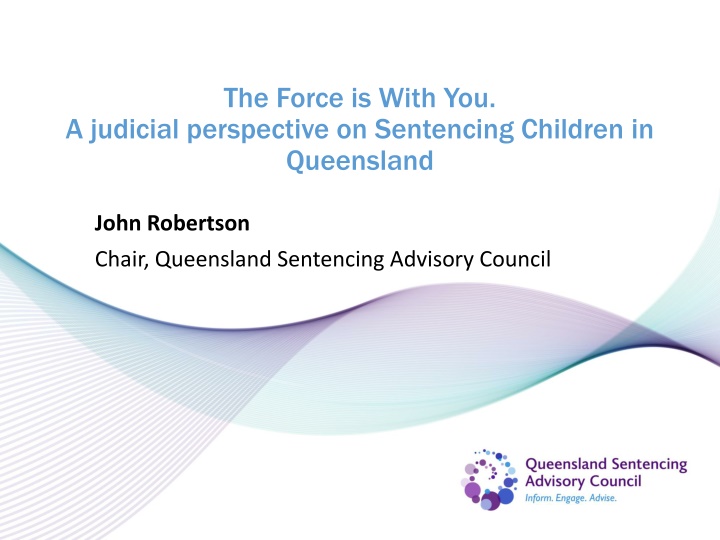
Sentencing of Children in Queensland: A Judicial Perspective
Explore the legal framework for sentencing children in Queensland under the Youth Justice Act 1992, including the unique regime governing children's sentencing compared to adults. Discover the rates of offending in Australia for youth, common offenses, and insights into offenses sentenced in 2019/20. Gain valuable insights into the judicial perspective on sentencing children in Queensland.
Uploaded on | 1 Views
Download Presentation

Please find below an Image/Link to download the presentation.
The content on the website is provided AS IS for your information and personal use only. It may not be sold, licensed, or shared on other websites without obtaining consent from the author. If you encounter any issues during the download, it is possible that the publisher has removed the file from their server.
You are allowed to download the files provided on this website for personal or commercial use, subject to the condition that they are used lawfully. All files are the property of their respective owners.
The content on the website is provided AS IS for your information and personal use only. It may not be sold, licensed, or shared on other websites without obtaining consent from the author.
E N D
Presentation Transcript
The Force is With You. A judicial perspective on Sentencing Children in Queensland John Robertson Chair, Queensland Sentencing Advisory Council
About the Council Provide advice to the Attorney-General about sentencing matters, if asked Give information to the community to enhance knowledge of sentencing Publish information about sentencing Research sentencing matters and publish the outcomes Obtain the community s views on sentencing Provide its views to the Court of Appeal on the giving or reviewing of a guideline judgment, if asked
Sentencing of children: Legal framework The sentencing of children in Queensland is governed by the Youth Justice Act 1992 The sentencing regime that applies to children is very different to that which applies to adults under the Penalties and Sentences Act 1992 The Act confers jurisdiction on the Childrens Court to hear and decide criminal charges involving children, excluding Supreme Court offences It also sets out the types of sentencing orders that can be imposed and maximum periods of detention that can be ordered
Rates of offending in Australia: Highest for 15-19 year-olds Most children do not continue to offend Offender rate by age group, 2018-19 4,075.5 4,500.0 3,612.8 Offender rate per 100,000 persons A Queensland-based cohort study (Livingston et al, 2008) identified 11% of offenders as chronic offenders (starting in childhood) 4,000.0 3,001.1 3,500.0 2,633.7 2,529.7 3,000.0 2,201.8 2,500.0 1,731.5 2,000.0 1,154.7 1,023.8 1,500.0 676.1 1,000.0 418.0 This group is responsible for one-third of all offences committed 159.5 500.0 0.0 Age group Source: Australian Bureau of Statistics, Recorded Crime Offenders, Table Offender rate(a) by age group(years), 2018 19 to 2019 20 .
Sentencing of children: Common offences (2019/20) Magistrate court 54.7% involve theft offences 26.7 % involve public order offences 28.8% involve unlawful entry Higher courts 25.7% involve acts intended to cause injury 33.4% involve theft offences 59.3% involve robbery
Sentencing of children: Offences sentenced (2019/20)
Sentencing of children: Common penalties (2019/20) Magistrate court 28.9% court- ordered conference 18.4% probation 39.2% reprimand Higher courts 21.7% court- ordered conference 63.9% probation 15.9 % detention
Sentencing of children: Sentencing outcomes (2019/20)
Overrepresentation of Aboriginal and Torres Strait Islander children in detention The proportion of cases sentenced in court involving Aboriginal and Torres Strait Islander children (12.7%) is more than double that of non-Indigenous children (4.7%) Aboriginal and Torres Strait Islander children being admitted to youth detention centres is higher compared to non-Indigenous children In 2018 19, Aboriginal and Torres Strait Islander children comprised 68.0 % of those admitted to detention (Justice report, Queensland Government Statisticians office) Sentencing outcomes for Aboriginal and Torres Strait Islander children (2005/06- 2018/19) Custodial Penalties 10.7% Community-based orders Monetary Recognisance Convicted nfp Reprimand
Justice re-investment: Community-led and place-based A redirection of money from prisons to fund and rebuild human resources and physical infrastructure in areas most affected by high levels of incarceration (Australian Law Reform Commission, 2018). Life-course approach to criminal justice system Several examples across Australia New South Wales: Bourke (Maranjuka), Cowra, Armidale (Backtrack) and Dubbo (Walwaay) Queensland: Cherbourg, Doomadgee and Mornington Island (Keeping on Country Recidivism Project) Western Australia: Halls Creek, Warakurna (all Aboriginal police) Northern Territory: Katherine South Australia: Port Adelaide
Success in Maranguka Justice Reinvestment in Bourke KPMG evaluated the project in 2018: 31% increase in year 12 student retention rates 38% reduction in charges across the top five juvenile offence categories 23% reduction in police recorded incidence of domestic violence and comparable drops in rates of re- offending 14% reduction in bail breaches and 42% reduction in days spent in custody KPMG estimated an economic impact of $3.1 million in 2017 (two thirds relate to impact to the justice system and one third is broader economic impact to the region)
The Walwaay project, Dubbo in NSW Started in 2017 when Detective Superintendent Peter McKenna became boss of the Dubbo Police District with 100 police under his direct command 90% of juvenile crime in District committed by 20 out of control kids Approved by Commissioner Mick Fuller as part of a push by law enforcement to steer disengaged kids from crime into education, vocational training, sport and employment using the established Police Citizen Youth Club system which we have in place in Queensland A small group of three police (one is Aboriginal) and a Police Aboriginal Liaison Officer to run the programme directly under the command of McKenna Showing the same very positive signs that have crystalized in Bourke
Queensland Sentencing Advisory Council www.sentencingcouncil.qld.gov.au www.facebook.com/qldsac @qldsac info@sentencingcouncil.qld.gov.au

